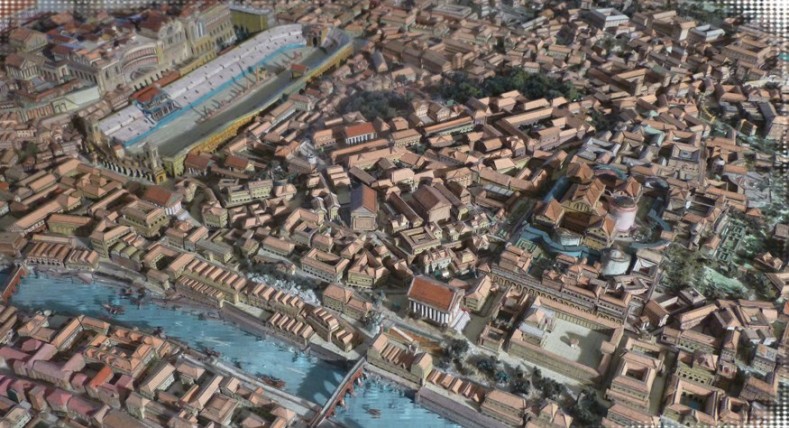The
Aventine Hill,(
Aventinus Mons)
(RegioXIII)
one of the seven hills of Rome, was only a small height. It consists actually of two peaks shared by a small gully,
the first peak is close to the Tiber and the second, the
minor Aventine
(and a part of it belonging to the XII Region of Rome, called
Piscina Publica)
is more south.
During the Republic, it has always been a popular district, and became under the Empire
a more residential area. King Servius Tullius let build a temple of Diana which became
the federal sanctuary of the Latins. Another old religious building was there as well,
the temple of Minerva. In addition to the Baths of Decius, which are the most impressive,
one of Emperor Trajan’s friends let build private baths, the Baths of Sura.
(The Aventine in the opposite angle

).
At last the
sub-aventine plain which spreads down to the Tiber.









